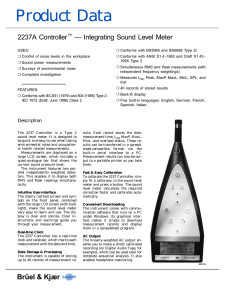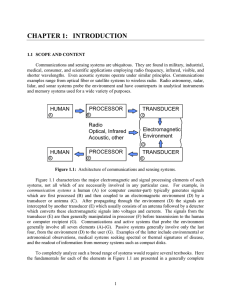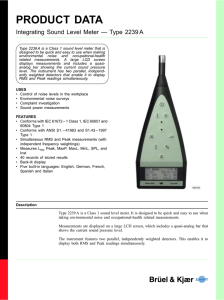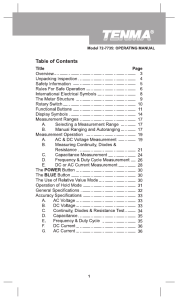MASSACHUSETTS INSTITUTE OF TECHNOLOGY Department of Electrical Engineering and Computer Science
advertisement
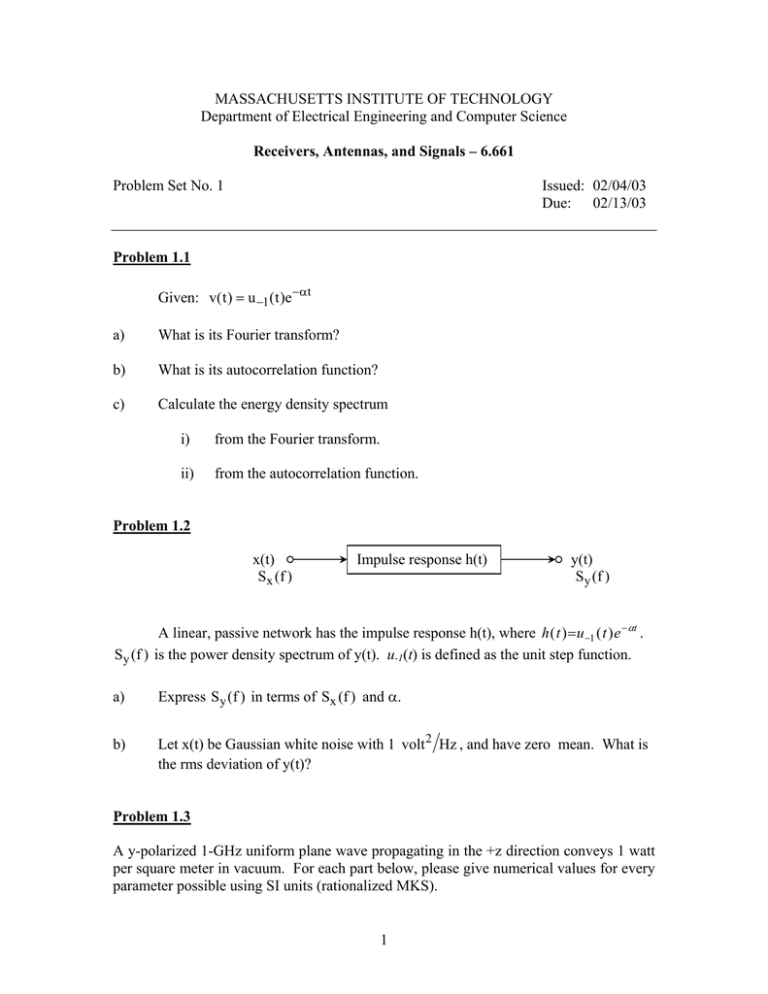
MASSACHUSETTS INSTITUTE OF TECHNOLOGY Department of Electrical Engineering and Computer Science Receivers, Antennas, and Signals – 6.661 Problem Set No. 1 Issued: 02/04/03 Due: 02/13/03 Problem 1.1 Given: v( t ) = u −1( t )e −αt a) What is its Fourier transform? b) What is its autocorrelation function? c) Calculate the energy density spectrum i) from the Fourier transform. ii) from the autocorrelation function. Problem 1.2 x(t) Sx (f ) Impulse response h(t) y(t) S y (f ) A linear, passive network has the impulse response h(t), where h ( t )= u−1 ( t ) e − αt . Sy (f ) is the power density spectrum of y(t). u-1(t) is defined as the unit step function. a) Express Sy (f ) in terms of Sx (f ) and α. b) Let x(t) be Gaussian white noise with 1 volt 2 Hz , and have zero mean. What is the rms deviation of y(t)? Problem 1.3 A y-polarized 1-GHz uniform plane wave propagating in the +z direction conveys 1 watt per square meter in vacuum. For each part below, please give numerical values for every parameter possible using SI units (rationalized MKS). 1 (a) Write an expression for the electric field vector E(x, y, z, t) and for its complex counterpart E(x, y, z) ; use the notation defined in Chapter 1 of the course notes. (b) (c) (d) This plane wave impacts an infinite perfectly conduction sheet at z = 0. Repeat part (a) for the total electromagnetic field for z < 0. ∗ Write expressions for the real ⎡S(t) = E(t) × H(t)⎤⎦ and the complex ⎡S = E × H ⎤ ⎣ ⎥⎦ ⎢⎣ Poynting vectors corresponding to your answer to Part (a) valid at z = -1 meter. Repeat (c) for the waves of Part (b). Write expressions for the instantaneous and time-average stored electric and magnetic energy densities at z = -1 meter, corresponding to your answers to Part (b). Problem 1.4 A 50-ohm coaxial cable carries CATV signals to apartments over a 100-MHz bandwidth. Assume the cable is quite lossy between the last amplifier and the drop at a particular apartment; the load is matched. (a) Approximately how many watts are emerging from this line in the given bandwidth on a cold day in Cambridge when the CATV transmitter is off? (b) Approximately what is the thermal rms voltage at the end of this line? State all assumptions. (c) Over approximately what frequency band does the Rayleigh-Jeans approximation hold for this line? 2






